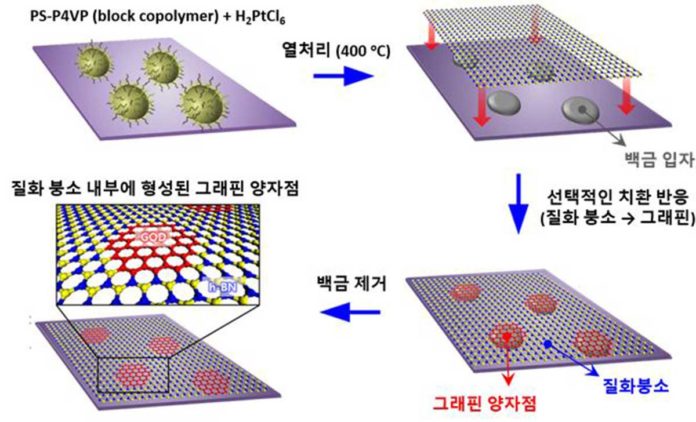
UNIST scientists have developed a new technology that can potentially fabricate highly ordered of graphene quantum dot (GQD). Moreover, it could pave the way for many other types of devices and physical phenomena to be studied.
During the study, scientists demonstrated a novel method for incorporating GQDs, implanted inside the hexagonal boron nitride (hBN) framework. Accordingly, they showed concurrent utilization of in-plane and van der Waals heterostructures to fabricate vertical single electron tunneling transistors.
As of not long ago, GQDs are set up through straightforward chemical exfoliation technique, in which it sheds graphene sheets from bulk graphite. Such a technique has made impossible the generation of GQDs of wanted size. Thus, this not just invites impurities at the edge of GQDs, yet in addition essentially blocks the stream of electrons. This hinders GQDs to show their special optical and electrical properties.
Scientists successfully demonstrated a novel way to remove the impurities at the edge of GQDs and adjusting the size of GQDs, as desired. The growth of in-plane GQD-hBN heterostructure was achieved on a SiO2 substrate covered by an array of platinum (Pt) nanoparticles (NP). Then, this was treated with heat in methane (CH4) gas. As a result, the size of GQDs was decided according to the size of Pt particles, thus generating highly-ordered GQDs inside the matrix of hexagonal boron nitride.
Gwangwoo Kim in the School of Energy and Chemical Engineering at UNIST said, “Since graphene and h-BN are similar in structure, it was possible to grow GQDs inside the matrix of h-BN. The growth of GQDs embedded in the hBN sheet are chemically bonded to BN, thus minimizing impurities.”
Scientists also fabricated arrays of highly-ordered uniform GQDs, and thus was able to adjust their sizes from 7 to 13 nm. They also succeeded in implementing vertical single electron tunneling transistors that minimize impurities to move electrons stably.
Professor Hyeon Suk Shin in the School of Natural Science at UNIST said, “The graphene quantum-dot-based single-electron transistor will be applied to electronic devices that operate through fast information processing at low power.”
The study published in the journal Nature Communications– has been supported by IBS Center for Multidimensional Carbon Materials (CMCM) and the research grant from the Center for Advanced Soft Electronics under the Global Frontier Research Program through the National Research Foundation by the Korean Ministry of Science.
